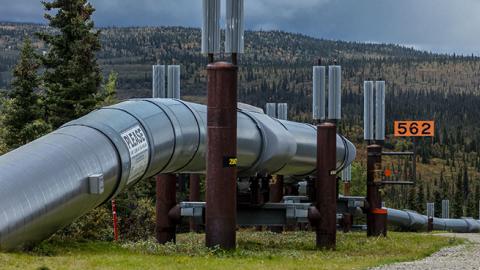The initial "report(National Income and Product Accounts
Gross Domestic Product: First Quarter 2017):https://www.bea.gov/newsreleases/national/gdp/2017/gdp1q17_adv.htm on 1st-quarter Gross Domestic Product earlier reported preliminary 1st-quarter industrial production involving drilling in the oil patch was up 159% over 2016 levels. This accounts for nearly 0.5% of the reported 0.7% GDP growth in the 1st quarter. This expansion bodes well for sustainable growth in the future, as the strength in this sector has outsized impacts on the rest of the economy.
The recent rise in crude oil prices and stability in natural gas prices are behind this new- found growth, but the animal spirits unleashed by the election of President Trump have played an equally large role. Expectations of a freer hand in production, transportation, use and exports of oil and gas also loom large in the revival. It is probably not an idle coincidence that the recent trough in mining sector jobs (which includes oil and gas production) was October 2016.
Since then, over 44,000 new jobs have been created in this sector. Exports of crude oil and refined products are now over 5 million barrels per day (b/d), and natural gas exports, boosted by low-cost production due to the shale technology revolution, have led to a trade surplus of over 2 billion cubic feet per day. Crude oil exports alone in the first two months of this year are more than three times the value of oil exports in the same period in 2016. The technology revolution continues to forge ahead and gas exports will grow as new liquified natural gas (LNG) export facilities come online in the next few years.
Growing strength in the U. S. oil and gas sector is an important factor in stimulating related industries in manufacturing, construction and transportation. The steel, pumps, engines, trucks, drilling bits, earth moving equipment, and related materials used in exploration and processing of oil and gas are largely made in the United States, and, presuming President Trumps executive orders and trade actions on steel, aluminum, transport pipelines and leasing for exploration are upheld, the benefits will be even larger.
In a study I co-authored in 2014, an econometric analysis based on a projection of maintaining a level of crude oil exports of 2 million barrels per day over a ten-year period starting in 2015 would have a strong impact on related industries. Domestic machinery production would be over 3% higher, construction and mining equipment would be 6% higher; over 200,000 construction jobs would be created at the peak of building out needed infrastructure, and overall capital spending would plateau at higher levels.
In the last six months, we have already seen the early impact of these trends in job growth and production in the oil and gas sector and in manufacturing. A related benefit is that increased production to help keep fuel prices low levels tends to boost consumption even further. It is also important to the domestic chemicals and plastics industry, which is the second largest producer and exporter in the U. S. manufacturing sector.
Oil and, more importantly, natural gas and gas liquids, are the main input into U. S. chemicals production, and prices are much lower than those in Europe and the Pacific industrial nations which must import most of their raw materials. Continued growth in the efficiency of oil and gas production, largely in shale producing regions, is allowing increased production while maintaining healthy profit margins.
These trends are likely to intensify as the new tax, regulatory and leasing policies of the new administration are implemented. New policies could stimulate even higher growth, exports and job creation. The 1st-quarter is only a preview of those benefits.
















